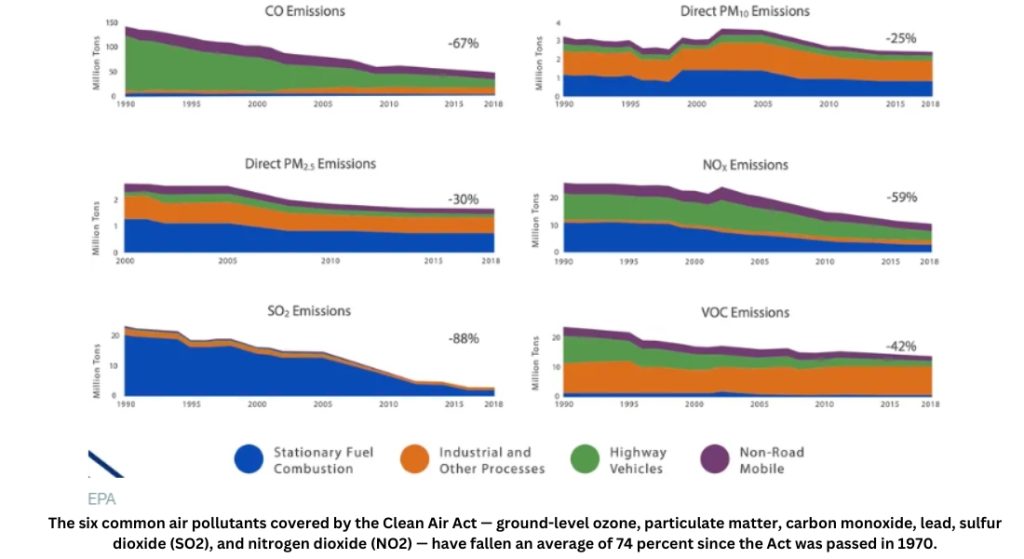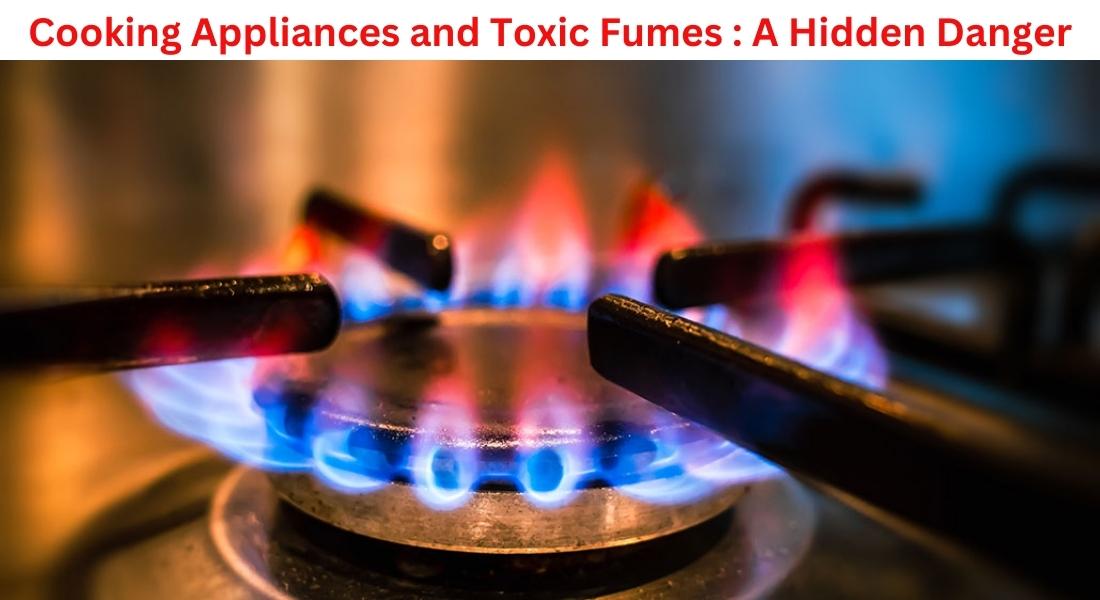There are cooking tools in every kitchen, but they can give off dangerous fumes. You should know about the risks when you cook and take steps to keep yourself and your family safe.
Our in-depth study will teach you how cooking machines give off dangerous fumes and how those fumes hurt our health.
As experts in the subject, we’ve looked into cooking equipment and one of its less-talked-about side effects. As it gives off harmful fumes. We’ll also look at the effects of different kitchen tools on indoor air quality. Eventually, our health will find the hidden risks that may be present in the way we cook every day.
Since our team of experts has done a lot of studies on how kitchen habits affect indoor air quality and health. As we think, it’s important to bring attention to the small but important problem of toxic fumes that cooking tools give off. These fumes, which we often don’t think about, can be very bad for our health.
Join us as we talk about the science behind the fumes. We also analyze some cooking issues and talk about what we can do to reduce the risk of indoor air pollution. Let’s go on a trip together to make kitchens safer and healthier without giving up our love of cooking and the art of making wonderful food.
Types of toxic fumes from cooking appliances
There are a variety of toxic fumes that can be emitted from cooking appliances, including:
Carbon Monoxide
This gas has no smell and no color. It is made when any carbon-containing fuel is partially burned. The following machines may produce enough carbon monoxide to cause poisoning:
- Gas Stoves,
- Ovens, And
- Broilers.
Nitrogen Dioxide
Gas heaters give off this gas when they are used. It might make asthma symptoms worse and upset the lungs.
Particulate Matter
Particulate matter (PM) is made up of solid bits and watery drops that are in the air. There are many different types of cooking equipment, but gas and wood stoves make the most of it.
PM can make the lungs and airways sore, and it has been linked to the following:
- Asthma,
- Heart Disease, And
- Lung Cancer, among Other Health Issues.
- Volatile Organic Compounds (Vocs)
The cooking of things like meat, fish, and oils releases a lot of chemicals into the air. These chemicals are called VOCs. Some VOCs are known to cause cancer, and others can cause physical issues, like as;
- Eyes,
- Nose, And
- Throat Itch
Per- And Polyfluoroalkyl Substances (PFAS)
PFAS are a group of chemicals that are used in cooking that don’t stick and other things. When nonstick cookware gets too hot, they can be released into the air.
PFAS has been linked to a number of health issues, such as ;
- Cancer,
- Issues With Reproduction, And
- Issues with the thyroid.
Gas Stove Harmful Effects (Its Important)
A major issue is that food can pollute the air inside homes, especially in places where conventional culinary techniques are used.
Some of the dangerous fumes that gas stoves can give off are the following things;
- Carbon Monoxide,
- Nitrogen Dioxide,
- Particulate Matter (Pm),
- Volatile Organic Compounds (Vocs), And
- Per- And Polyfluoroalkyl Substances (PFAS)

Carbon monoxide is a gas that has no smell or color and can kill you. It is made while any carbon-containing fuel, like natural gas, is burned incompletely. When someone breathes in carbon monoxide, it takes oxygen out of the blood, which can kill them.
Nitrogen dioxide is a brownish-red gas that can make asthma symptoms worse and hurt the lungs. Jarvis D et al (1998) titled “The association of respiratory symptoms and lung function with the use of gas for cooking” stated that gas stoves release harmful gases such nitrogen dioxide (NO2), carbon monoxide (CO), and formaldehyde (HCHO), which may aggravate a wide range of respiratory and other health problems.
Logue J M et al. titled Pollutant exposures from natural gas cooking burners: a simulation-based assessment for Southern California stated that estimates for the contribution of gas burners to weekly average indoor NO2 concentrations ranged from 25-33% during the summer to 35-39% during the winter. The change in air circulation during the winter probably accounted for the seasonal variation.
Researchers also calculated that gas stoves accounted for 30% of the summertime CO inside and 21% of the wintertime CO indoors. Since outdoor concentrations of CO tend to be lower in the summer, the appliances in this example supplied significantly more CO during that season. When compared to other indoor sources, such as furniture and building materials, the contribution of appliances to HCHO concentrations was negligible.
Researchers concluded that if people in California did not use range hoods while cooking, an estimated 1.7 million people would be exposed to CO levels above ambient air standards and 12 million would be exposed to excessive NO2 levels during a typical winter week.
It’s made when gas stoves are used. Chronic obstructive lung disease (COPD) danger can go up if you are exposed to nitrogen dioxide for a long time.
Particulate matter, also called PM, is made up of solid bits and liquid drops that are in the air. This gas is made by all kinds of burning, even gas heaters.
PM can make the lungs and airways sore, and it has been linked to the following things;
- Asthma,
- Heart Disease, And
- Lung Cancer, Among Other Health Issues.
When things like meat, fish, and oils are cooked, they release a lot of chemicals into the air. These chemicals are called volatile organic compounds (VOCs).
This group of chemicals is called per- and polyfluoroalkyl substances (PFAS). They are used in nonstick pans and other things. When nonstick cookware gets too hot, it can be released into the air. PFAS has been linked to a number of health issues, such as cancer, issues with reproduction, and issues with the thyroid.
Gas heaters not only give off dangerous fumes, but they can also make fires and explosions more likely.
Health risks of exposure to toxic fumes from cooking appliances

If the stove doesn’t have enough air flow or there is a gas leak, breathing in gas from the stove can expose you to gases. It could be dangerous. The effects of breathing in gas fumes depend on the type of gas, the length of time exposed, and the amount of gas in the air.
Wayne R., and John W. Roberts titled “Everyday Exposure to Toxic Pollutants” said that toxic fumes from cooking equipment can make a person sick in many ways. When someone breathes in gas from a stove, they often experience the following symptoms:
Here are some common symptoms associated with inhaling gas from a stove:
- Irritation of the eyes, nose, and throat
- Headaches
- Nausea
- Dizziness
- Fatigue
- Asthma attacks
- Worsened heart disease and lung disease
- Increased risk of cancer
Toxic Fumes From Cooking Oil-Bad or Good
Toxic fumes from cooking oil can be bad for your health as well as non-toxic is good for health. When burning oil gets very hot, it can release chemicals that are bad for you into the air. Fumes from cooking oils are made up of both gaseous and solid particles that are released into the air when they are burned.
These fumes may contain a number of dangerous chemicals, such as
Acrolein: One that is known to cause cancer and can hurt the eyes, nose, and throat.
Aldehydes: A group of chemicals that can make the lungs and airways hurt, and some of them are known to cause cancer.
Polycyclic aromatic hydrocarbons (PAHs): A group of chemicals that are known carcinogens.
Particulate matter (PM): A mixture of solid particles and liquid drops that can affect the lungs and airways. It has been linked to asthma, heart disease, and lung cancer, among other health issues.
Emissions of harmful chemicals from cooking oil can be very bad for your health. Utilize a range hood or vent fan, cook at lower temperatures, avoid using too much oil, pick healthy cooking oils, and clean your cooking tools on a regular basis to lower your exposure to these fumes.
Do Gas Stoves Cause Cancer?
More and more proof points to the fact that gas stoves can lead to cancer. The journal Environmental Science & Technology released a study in 2022 that found cooking on gas stoves releases a lot of nitrogen dioxide (NO2) into the air. NO2 is known to cause cancer and irritation of the lungs.
Kitchens can have as much as 400 parts per billion (ppb) of NO2 from gas stoves, the study found. The EPA’s limit for NO2 in open air is 53 parts per billion, so this is a lot higher.
Another study, which came out in the journal Indoor Air in 2021, found that kids who live in homes with gas stoves are more likely to get asthma as kids.
There is proof that smoke from gas stoves can be dangerous and cause cancer and other health issues. Using a range hood or exhaust fan when cooking and making sure your kitchen has good air flow are all things you can do to lower your exposure to these fumes.
To reduce potential health risks, consider the following precautions:
- Make sure the kitchen has enough air flow by opening windows or using exhaust fans.
- Keep gas stoves in good shape and check for leaks often.
- You might want to use ventilation screens that let air out into the outdoors.
- If you have breathing problems or worries, you should talk to a doctor or nurse.
Lastly, the link between using a gas stove and getting cancer is complicated and needs more study.
Are Gas Stoves More Dangerous Than Electric
A lot of people have different ideas about whether gas stoves or electric stoves are safer. Both electric and gas stoves may pose some safety risks, but there is some proof that gas stoves may be more dangerous to people’s health.
One of the biggest worries about gas stoves is that they can give off dangerous fumes like carbon monoxide, nitrogen dioxide, and small particles. There are many health issues that these fumes can cause, such as breathing issues, heart disease, and cancer. Most people think that electric stoves are safer because they don’t give off these fumes.
One more worry about gas stoves is that they may be more likely to start fires or explode. The reason for this is that natural gas can catch fire. Since electric stoves don’t catch fire easily, they are less likely to start a fire.
But if you don’t use them right, electric heaters can also be dangerous. Like, if you don’t ground your electric stove properly, it can give you electricity burns. If you don’t take care of your electric stove, it can also start fires.
If you use them right and keep them in good shape, both gas and electric stoves can be safe. Gas heaters, on the other hand, may be more dangerous to people’s health because they give off fumes.
Here are some tips for using both gas and electric stoves safely:
- Never use an air fan or range hood to get fumes outside.
- Make sure to clean and take care of your stove.
- When the temperature is high, don’t use cookware that doesn’t stick.
- As much as possible, cook at lower temperatures.
- Don’t cook things that make a lot of smoke, like grilled meat and fried foods.
- Keep a close eye on kids and pets when the stove is on.
NOTE: Know the symptoms of carbon monoxide poisoning. For example, headaches, nausea, dizziness, and confusion can be signs of carbon monoxide poisoning. In the event that any of these signs show up while you are cooking with gas, quickly turn off the stove and go outside.
You can lower your risk of getting hurt or sick when using either a gas or electric stove by following these safety tips.
How to reduce exposure to toxic fumes from cooking appliances
There are a number of things you can do to reduce your exposure to toxic fumes from cooking appliances:
- Let fumes out by using an air fan or range hood. This is the best way to keep from breathing in harmful fumes from cooking tools.
- Clean and take care of your cooking equipment. This will help cut down on the pollution your machines give off.
- When the temperature is high, don’t use cookware that doesn’t stick. This might let PFAS into the air.
- As much as possible, cook at lower temperatures. This will make it easier to cut down on the smoke and fumes.
- Don’t cook things that make a lot of smoke, like grilled meat and fried foods.
If you have a wood heater, make sure to burn clean, dry wood and leave the vent open. The amount of smoke will go down because of this.
What can be done to address the problem of toxic fumes from cooking appliances?
To deal with the issue of harmful fumes from kitchen equipment, some options are:
Creating and following rules for cooking equipment that lower emissions. This could mean that better air systems, heaters that work better, and screens that get rid of harmful fumes are needed.
Making people aware of the dangers of breathing in harmful fumes from cooking tools and the best ways to limit their exposure. Public recognition efforts, marking laws, and customer education tools could all help with this.
Encouraging the use of different ways to cook, like microwave ovens and electric induction cooktops. Traditional gas and wood-burning heaters give off more pollution than these ways.
FAQs on Cooking Appliances and Toxic Fumes
How Bad Are The Fumes From A Gas Stove?
Oxides like nitrogen dioxide and carbon monoxide that come from a gas stove can be dangerous. Long-term contact could cause problems with the lungs and heart.
What Are The Side Effects Of Cooking Smoke?
Cooking smoke, especially from solid fuels, can irritate the eyes, give you headaches, make you sick, and, if you are exposed to it for a long time, it can hurt your lungs and heart.
What Are Sources Of Toxic Fumes?
As well as cooking tools (like gas stoves), tobacco smoke, home cleaners, some building materials, and chemicals all give off toxic smells. Having enough air flow and picking cleaner choices can help lower risk.
Final Say
From the above study, it is recommended that cooking machines give off dangerous fumes that are very bad for your health. Understand the dangers and take steps to safeguard your family and yourself. To lower your exposure to these harmful fumes, use a range hood or vent fan, keep your tools clean and in good shape, cook at lower temperatures, don’t use nonstick pans at high temperatures, and stay away from foods that make a lot of smoke.
What Are The Future Prospects For Reducing Exposure To Toxic Fumes From Cooking Appliances?
There are good signs that harmful fumes from cooking equipment will be less of a problem in the future. In the works are a number of new technologies that could help make cooking equipment less polluting. Tama, A. (2022) told that, electric induction cooktops are becoming more and more common, and they don’t put out a lot of pollution. There are also a lot of new filter systems being made that can clean the air of harmful materials.
But keep in mind that it will take some time for these new tools to catch on with a lot of people. After reading this, people can take steps to protect themselves and their families by using the tips above.
References
- Tama, A. (2022) Deployment of Electric Induction Technologies into Cooktops Plates as a Part of Energy Sustainability. Smart Grid and Renewable Energy, 13, 55-74. doi: 10.4236/sgre.2022.133004.
- Jarvis D et al. The association of respiratory symptoms and lung function with the use of gas for cooking. Eur Respir J 11(3):651-658 1998. http://www.ncbi.nlm.nih.gov/pubmed/9596117 https://www.ncbi.nlm.nih.gov/pubmed/9596117.
- Logue JM et al. Pollutant exposures from natural gas cooking burners: a simulation-based assessment for Southern California. Environ Health Perspect 122(1):43-50 2013.; https://doi.org/10.1289/ehp.1306673.
- Wayne R., John W. Roberts. “Everyday Exposure to Toxic Pollutants.Ott, W. R., & Roberts, J. W. (1998). Everyday Exposure to Toxic Pollutants. Scientific American, 278(2), 86–91. http://www.jstor.org/stable/26057669
As a 10 years veteran in the culinary industry, I have developed a passion for all things kitchen. With a deep understanding of food preparation and cooking techniques, I am a true kitchen specialist. My experience working in Khedmot kitchen has allowed me to hone my skills and become an expert in creating delicious and visually appealing dishes.
I am a creative and innovative chef, constantly experimenting with new ingredients and cooking methods to bring unique and memorable dining experiences to my customers. In addition to my culinary expertise, I am also highly organized and able to effectively manage a team of kitchen staff, ensuring that all tasks are completed efficiently and to a high standard.
I am dedicated to my craft and always strive to create exceptional dining experiences for my customers. Whether it’s developing a new menu, training my kitchen team, or working with local suppliers, I am always looking for ways to improve and take my kitchen to the next level.
If you’re looking for a skilled and passionate kitchen specialist, look no further. I am eager to bring my expertise to your team and help take your kitchen to the next level.


